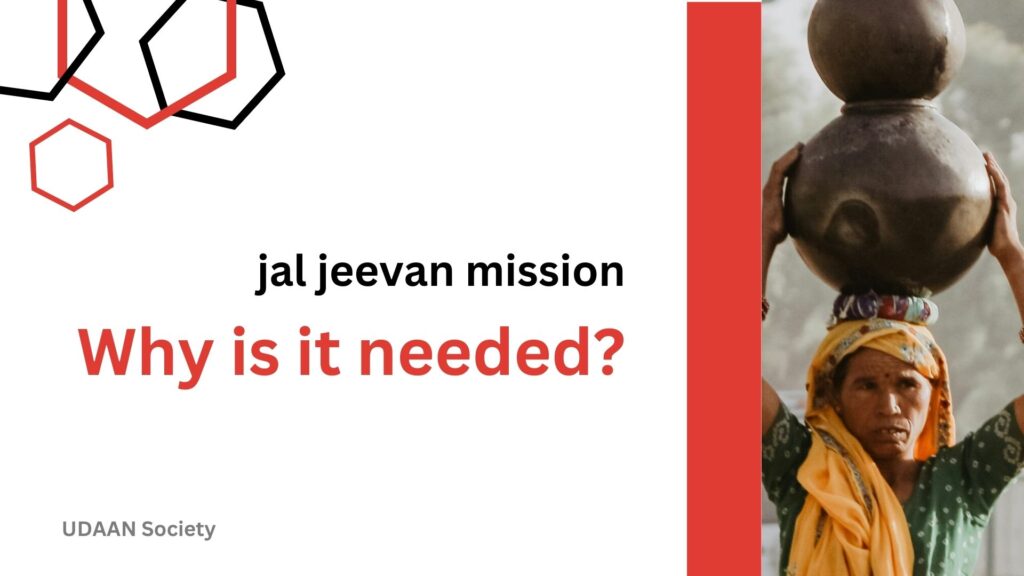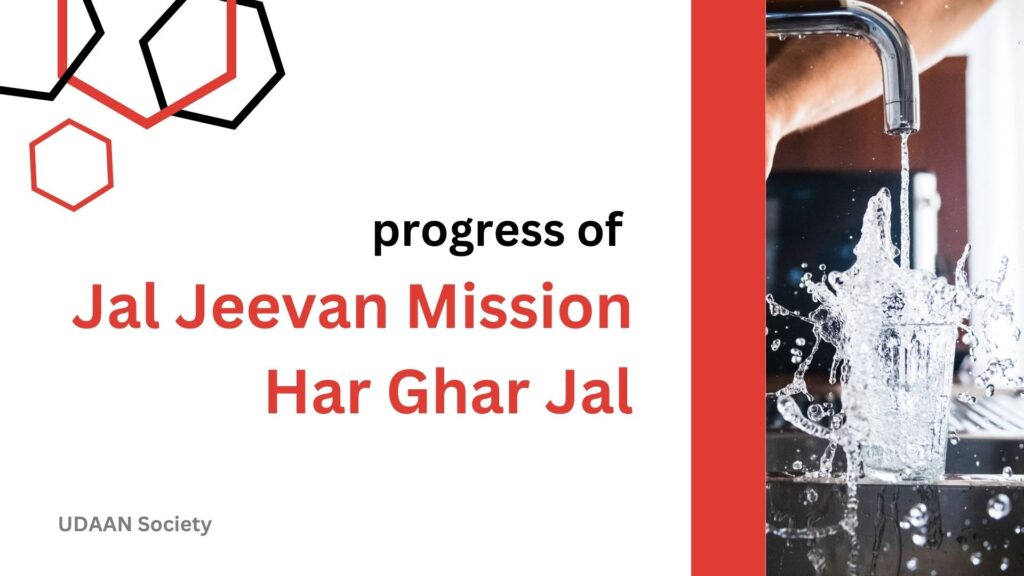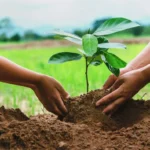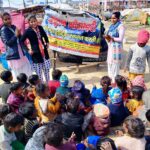The government has made a lot of initiatives in recent years to raise people’s standard of living and ease of living. The objective of the Jal Jeevan Mission is to link every public institution and home to tap water.
Table of Contents
Background
Of the 18.93 crore rural homes in India, just 17% have access to any kind of tap water connection. The Indian PM announced the Jal Jeevan Mission (JJM – Har Ghar Jal) on August 15, 2019, after realizing this imbalance.

Why is it needed?
(1) The burden of water-borne illnesses is lessened when people have access to clean water;
(2) Better sanitation and hygiene are necessary to guarantee an overall improvement in public health; and
(3) Women and young girls are freed from the long-standing hardship of carrying water from a distance. It provides them with the time to pursue their chosen course of study or career;
(4) Make sure that water does not become a barrier to India’s swift socioeconomic development and pursuit of high economic growth in order to end poverty.
About
- By 2024, it aims to provide every rural Indian household with a working tap connection.
- An estimate of Rs 3.60 trillion has been made for the mission’s total cost, of which the central government will pay Rs 2.08 trillion.

Benefits of Jal Jeevan Mission (JJM – Har Ghar Jal)
- The anticipated results include giving rural populations dignity in life and reducing the amount of hardship that women must endure in their daily lives.
- Additionally, a whole new group of plumbers, masons, pump mechanics, and quality-control professionals will gain skills through the Jal Jeevan Mission (JJM – Har Ghar Jal), creating a sizable employment market throughout Bharat.
- In rural India, there would be an additional 90 lakh employment if each village added 15 new jobs.

Progress of Jal Jeevan Mission (JJM – Har Ghar Jal)
- The progress that has been reported thus far is more than adequate. As of July 2021, around 41% of the goal had been achieved. It seems possible to reach the entire goal by 2024.
- In light of our nation’s federal system, the variety of the water-source problem across various regions, and the extreme specificity of the deliverables, this will be praiseworthy on its own.
Other steps that Jal Jeevan Mission (JJM – Har Ghar Jal) can do include:
- Professionals advise starting a vigorous outreach campaign to foundations, trusts, and companies both domestically and internationally. This may allow people to adopt a group of communities and take part in this historic endeavour.
- Furthermore, energy, public health, and education can be added to the Pani Samitis’ growth into local water utilities.
- The several cases of iron, nitrate, salinity, fluoride, arsenic, and heavy metal poisoning of groundwater are proving to be highly problematic.
- The impacted communities will be fortunate to have a committed technical team working towards the permanent eradication of these problems.
FAQs
Q.1 What is the aim of Jal Jeevan Mission?
By 2024, the government aims to have every home have access to tap water as part of this program.
Q.2 What is Jal Jeevan Mission’s budget?
The Jal Jeevan Mission will cost about $50 billion, or Rs 3,60,000 crore.
Q.3 Why would the rural economy benefit from Jal Jeevan Mission?
An estimated Rs 70,000 crore would be spent annually on:
Cement
Pipes
Pumps
Equipment
Construction
Wages
Conservation
The revival of water bodies
Skill building, and
Institution creation
Q.4 Which Ministry is responsible for implementing it?
Its execution is within the purview of the Ministry of Jal Shakti. The Ministry of Drinking Water and Sanitation and the Ministry of Water Resources, River Development, and Ganga Rejuvenation were combined to become the Ministry of Jal Shakti.
Q.5 What is Jal Shakti Abhiyan’s primary goal?
It will concentrate on five aspects:
Rainwater collection and conservation of water
Restoration of conventional and alternative water features
Reusing water and recharging buildings
Development of watersheds
Profound afforestation









